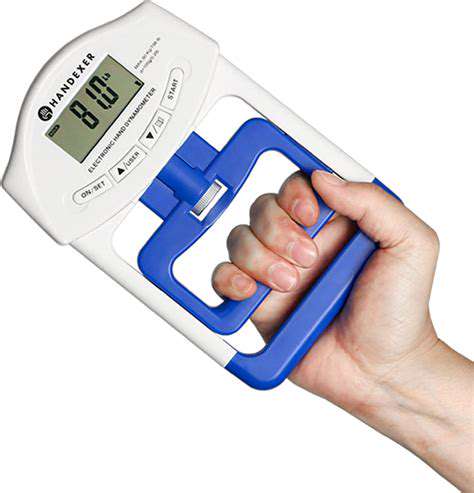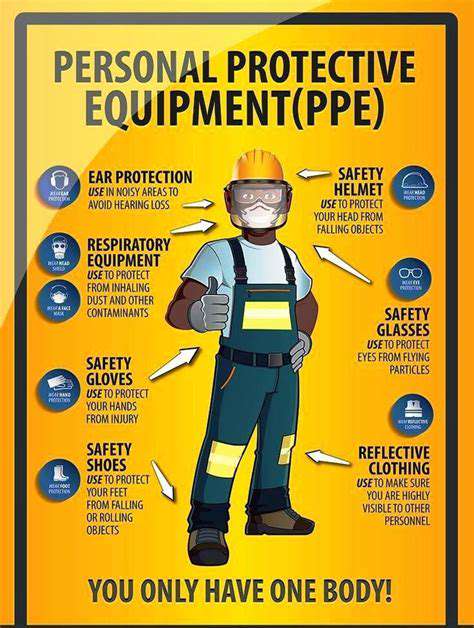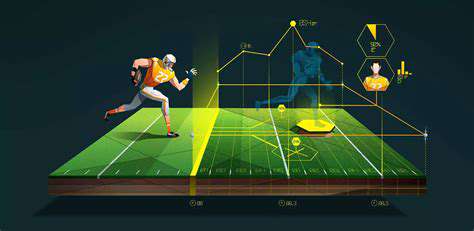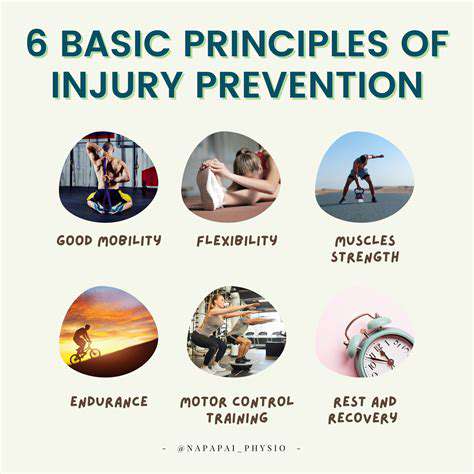Smart Technologies for Tracking Hand Performance
Different Types of Hand Tracking Technologies
Different Hand Tracking Methods
Hand tracking technology has evolved significantly, offering various methods for recognizing and interpreting hand movements. One common approach involves using depth cameras, like those found in some gaming or augmented reality devices. These cameras generate a 3D representation of the hand, enabling accurate tracking of its position and orientation in space. This precise data is crucial for applications requiring complex hand gestures or intricate manipulations.
Another method leverages the power of computer vision algorithms. These algorithms analyze images captured by standard cameras, often employing machine learning models to identify key points on the hand, such as joints and fingertips. While potentially less precise than depth-based systems, these approaches are often more accessible due to the prevalence of standard cameras in everyday devices.
Accuracy and Precision in Hand Tracking
The accuracy of hand tracking technology is a critical factor in its effectiveness. Different methods offer varying degrees of precision. Depth-sensing cameras, with their inherent 3D data, generally provide more accurate results, especially when dealing with complex hand movements or fine-grained gestures. However, the accuracy of computer vision-based systems is continually improving with advancements in machine learning techniques.
Factors such as lighting conditions, hand posture, and the presence of occlusions can all affect the accuracy of hand tracking. Ensuring reliable tracking, even in challenging environments, is a key challenge for researchers and developers. Researchers are actively working on robust algorithms to mitigate these challenges and improve the overall reliability of hand tracking systems.
Furthermore, the resolution of the input images or the depth data directly impacts the precision of the tracking. Higher resolution data typically leads to more accurate identification of hand features and movements. This is important for applications demanding precise manipulation and interaction with virtual objects.
The speed of processing the data is also important. Real-time performance is crucial for many applications, such as interactive games or virtual reality experiences. Real-time processing ensures a seamless and responsive user experience.
Applications of Hand Tracking Technology
Hand tracking technology finds applications across a broad spectrum of industries. In the gaming industry, it allows for intuitive and immersive control of virtual characters and environments, enabling more natural interaction and gameplay. The medical field utilizes this technology for rehabilitation exercises and surgical procedures, potentially providing more precise and controlled interventions.
Furthermore, hand tracking is increasingly important in industrial automation. It allows robots to interact with objects and perform tasks with greater precision and flexibility. This can lead to increased efficiency and safety in manufacturing processes. Hand tracking technology has the potential to revolutionize various sectors, from gaming to healthcare.
Additionally, user interfaces are being enhanced by hand tracking, allowing for more intuitive and natural ways to interact with computers. This is especially relevant for virtual reality and augmented reality applications, where hand-based interactions are becoming increasingly common. By enabling users to control digital objects and environments using their natural hand movements, hand tracking empowers more intuitive and user-friendly interfaces.
Future Directions and Challenges
Improving Accuracy and Reliability
Future advancements in smart technologies for tracking hand performance should prioritize enhanced accuracy and reliability. Current systems, while showing promise, often struggle with inconsistencies in capturing subtle hand movements, particularly in complex tasks or environments with significant background noise. This necessitates the development of more robust algorithms and sensors capable of discerning fine motor skills and distinguishing between similar hand gestures with high precision. Improved signal processing techniques and sophisticated filtering methods are crucial for reducing noise and improving the overall fidelity of the data collected.
Further research should focus on developing standardized protocols for data collection and analysis. This standardization will facilitate comparisons across different studies and systems, allowing for a more comprehensive understanding of the strengths and limitations of various technologies. Establishing benchmarks and metrics for accuracy, precision, and response time will be essential for evaluating and improving the performance of hand tracking systems.
Addressing Accessibility and Inclusivity
Expanding the accessibility and inclusivity of smart hand tracking technologies is paramount. Current systems often rely on specific hardware or software configurations that may not be accessible to all users, particularly those with disabilities. Developing adaptive interfaces and user-friendly software is crucial for ensuring that hand tracking systems are usable by diverse populations. This may involve exploring alternative input methods, such as eye-tracking or voice control, to complement or replace hand gestures in specific situations. Furthermore, the use of affordable and widely available devices, along with user-friendly software, will broaden the accessibility of these technologies.
Addressing the diverse needs of users with different hand shapes, sizes, and abilities is also vital. Algorithms should be trained on a wider range of hand morphologies and movements to ensure that the tracking performance is consistent across individuals with varying physical characteristics. This will help to prevent exclusion and ensure that hand tracking systems can benefit the widest possible range of users.
Enhancing Real-World Applicability
To truly revolutionize how we interact with and understand hand performance, smart tracking technologies need to move beyond controlled laboratory settings and become more applicable in real-world contexts. This includes adapting the systems to work reliably in dynamic environments with varying lighting conditions, background clutter, and user movement patterns. Robust signal processing and noise reduction techniques are key for ensuring accurate data collection in these complex scenarios. Integration with existing devices and platforms, such as augmented reality systems and robotic prosthetics, will enhance the practicality and impact of these technologies.
Ethical Considerations and Data Privacy
The increasing use of smart technologies for tracking hand performance raises important ethical considerations regarding data privacy and security. Protecting user data from unauthorized access and ensuring compliance with privacy regulations is paramount. Strong data encryption and secure storage protocols are necessary to safeguard sensitive information. Clear guidelines and policies for data usage and sharing should be established to build trust and maintain user confidence. Transparency regarding data collection practices and user rights is also essential. Open discussions and collaboration with ethicists and policymakers are needed to address these concerns and ensure that the development and deployment of hand tracking technologies are conducted responsibly and ethically.











